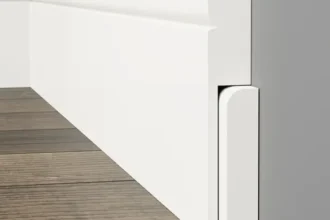For decades, wood treatment meant chemicals, fumigation tents, and long, disruptive processes. Whether dealing with termites, woodworms, or beetles, the industry standard was to soak, spray, or gas the problem away. But today, that entire model is being turned on its head—thanks to microwave technology. This cutting-edge, non-invasive method is revolutionizing how we treat wood by making pest elimination faster, cleaner, and far more precise than ever before.
Microwave wood treatment works by using electromagnetic waves—typically at 2.45 GHz—to target moisture deep within the wood. These waves cause water molecules to vibrate rapidly, creating heat from the inside out. As a result, infested wood heats up internally to a temperature that’s fatal to insects in all stages of life, including eggs, larvae, and adults. Importantly, this lethal temperature (around 55–70 °C) is reached without burning the wood or harming its surface. The outcome is complete disinfestation with zero chemical residue, and without damage to the wood’s appearance or structure.
This internal heating mechanism is what truly turns traditional treatment methods upside down. Instead of attacking pests from the surface—where sprays often fail to reach burrowed insects—microwaves work from the inside, targeting exactly where the pests live and reproduce. No need to drill holes into beams, inject toxins, or seal off entire sections of a house for fumigation. Microwave systems allow for localized, precision-targeted treatments with portable units that can be applied directly to walls, beams, floors, or even antique furniture.
The implications for property owners, conservationists, and pest control professionals are huge. For one, microwave treatment is non-toxic and eco-friendly. There’s no risk to humans, pets, or the environment. You don’t need to vacate your home, cover your furniture, or wait days before re-entering treated spaces. Once the wood cools, it’s safe and ready to use—no drying time, no off-gassing, and no health warnings.Visit Online shashel for More details.
In sensitive environments like museums, churches, libraries, and historic homes, microwave tools are especially valuable. These locations often house centuries-old timber structures or antique furnishings that cannot be exposed to moisture, freezing, or chemicals. Microwaves treat only the infested areas without compromising finishes, adhesives, or the original material. For preservationists who aim to retain authenticity while solving pest problems, microwave disinfestation offers the best of both worlds—effective results with minimal intrusion.
Another way microwaves are changing the game is by combining pest control with moisture management. Since many wood-destroying insects are drawn to damp environments, drying wood becomes an essential part of long-term prevention. Microwave heating naturally reduces internal wood moisture, helping to protect against future infestations, mold growth, and structural decay. This dual-action—disinfesting and drying—is something no spray or gas can achieve in a single treatment.
Microwave systems also promote efficiency and speed. Traditional treatments often require multiple visits or continuous application over weeks. In contrast, microwave disinfestation can be completed in as little as 30 minutes per treated area, depending on the size and infestation level. This saves time for contractors, minimizes disruption for homeowners, and lowers overall treatment costs in the long run.
Perhaps most impressively, microwave technology is empowering a new generation of pest control professionals and homeowners alike. With the availability of portable, easy-to-use microwave units, more contractors are incorporating this clean, modern method into their toolkit. It’s also becoming a go-to solution for sustainable building practices and eco-conscious renovation projects where chemicals are simply not an option.
In conclusion, microwave wood treatment isn’t just another method—it’s a paradigm shift. It challenges old assumptions about how pests must be eliminated and how wood should be preserved. By heating from within, preserving from the outside, and eliminating without toxins, microwaves are turning wood treatment on its head—and reshaping the future of structural care, one beam at a time.


